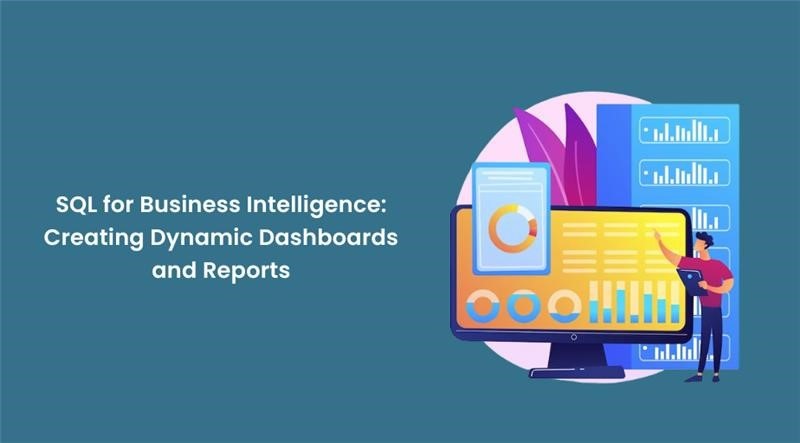
Organisations rely significantly on Business Intelligence (BI) to extract meaningful insights from their data and make strategic choices in today’s data-driven business environment. With the help of SQL (Structured Query Language), professionals may rapidly access, analyse, and alter data. Create dynamic dashboards and reports with SQL to show data engagingly and interactively. In this blog, we’ll explore how SQL strengthens business intelligence by making it possible to create interactive dashboards and reports. Pursuing SQL Certification might be a great place to start for people who want to develop their SQL abilities and investigate practical SQL Projects.
The Role of SQL in Business Intelligence
Utilising tools and methods for data analysis, business intelligence includes turning raw data into insights that can be used. The core of BI is SQL, a potent database querying language. It offers a standardised and effective method for interacting with databases, information extraction, and sophisticated data manipulation. SQL is employed to:
- BI experts can get the needed data since SQL queries may extract particular data from databases.
- Data filtering and sorting are made possible by SQL queries, which aid analysts in concentrating on pertinent data and spotting trends.
- SQL supports SUM, AVG, COUNT, and more functions to aggregate data and conduct computations on massive datasets.
- SQL’s ability to combine data from several tables makes a complete picture of company data possible.
- Data may be transformed with SQL for reporting, analysis, and visualisation.
Creating Dynamic Dashboards with SQL
Modern BI systems often include dynamic dashboards as a crucial element. Thanks to their interactive and real-time data visualisation, users can dive deeper, study patterns, and discover insights right away. SQL plays a significant part in creating dynamic dashboards by enabling data extraction and modification.
- The required data is retrieved using SQL queries for dashboard elements. These queries might be improved to guarantee quick data retrieval and response times.
- The aggregate functions in SQL make it simpler for users to understand complicated information by summarising data for dashboard widgets like charts and graphs.
- Users can alter the data displays in dashboards based on their choices thanks to SQL’s ability to create dynamic filters.
- The newest information is displayed on the dashboard thanks to SQL queries that may be created to gather real-time data from databases.
Creating Reports with SQL
Reports are crucial to BI since they give decision-makers organised, structured information. When creating reports from underlying data sources, SQL is essential.
- To ensure that the data displayed complies with the precise reporting criteria, SQL enables the construction of bespoke queries for report production.
- SQL provides parameterised queries, allowing users to dynamically input variables to tailor the scope and emphasis of the report.
- The readability of reports may be improved by using conditional logic in SQL queries to structure report items based on specific criteria.
- The creation and delivery of reports can be automated by integrating SQL queries into the procedures involved.
Conclusion
SQL is a crucial component of business intelligence, allowing specialists to create dynamic dashboards and reports that provide insightful analysis and improve data-driven decision-making. As organisations rely more and more on data for their business goals, the importance of SQL in BI is growing. By adopting SQL for BI, businesses may increase the value of their data and get a competitive edge in the market. Anyone seeking to establish oneself in data analysis and business intelligence may pursue SQL Certification; having a solid foundation in SQL can open doors to exciting work opportunities for modern BI practitioners. Whether they are creating comprehensive reports or working on dynamic dashboards, SQL expertise remains a vital asset.







